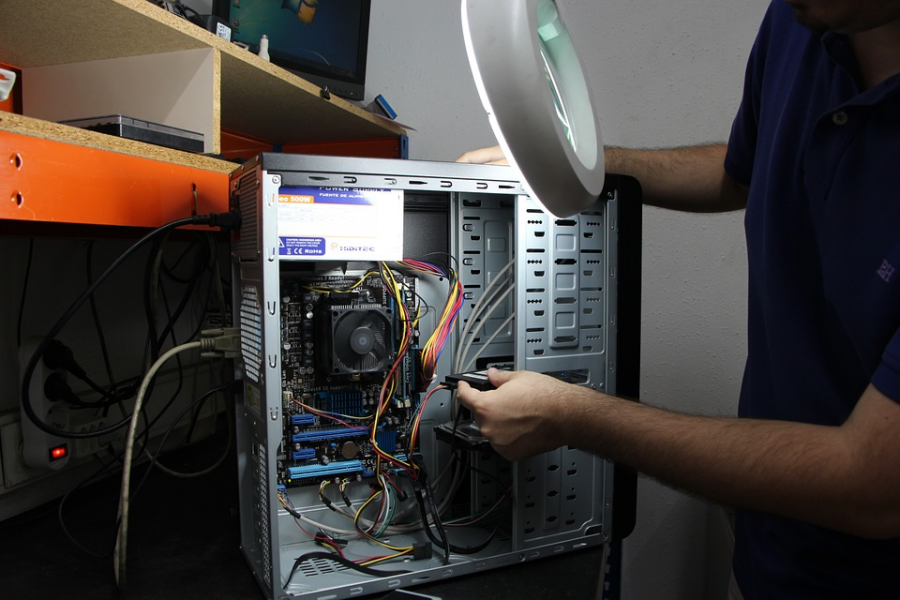It’s hard to call yourself a true gamer if you hadn’t at least thought about building your own PC at least 15 times a year. You can enjoy all the classics with 256mb of ram and a Celeron processor, there is nothing wrong with, all great things started small. The problem of the gaming scene is that it can be a bit expensive for those who want to reap all the fruits. The game industry is a highly competitive market, different games are being constantly and quickly developed to outdo themselves in addition to keeping up with other games. At first, games were produced depending on the average PC specs of that time, but now, PC hardware companies are trying to keep up with all the advanced and heavy games being pumped into the market.
You probably have more than one reason that makes you want to build your own PC, maybe you’d like to feel what it’s like to play the latest game on a 4K resolution or perhaps try out the sequel to your favorite game that never used to work on your PC. Technology leaps in virtual reality makes having a high-end PC a must to get on the VR wagon, it has proved to be very intensive in terms of processing. Choosing the right parts for your PC starts with defining a budget, knowing what you need, future-proofing, and comparing performances. We’ll be giving you some tips on picking the right parts for your future PC build.
Choosing a Case
Think of the case as your PC’s skeleton, it’s the foundation on which you can start building and connecting all the parts. Your case defines how your PC will look like, in addition to being a very important factor for choosing the size of your component. A gaming PC requires a big case, the high processing power of the component means that they are big in size. A powerful graphic card is going to take a lot of space, high-end processors need to have some space for better cooling, and your motherboard should be able to fit in the case easily without cramming it. If you’re not interested about gaming, a small case will do since the parts wouldn’t be as big compared to gaming parts.
The Motherboard
Your motherboard is the central nervous system that connects all the parts together. Your motherboard’s size should be in sync with your case since it’s attached to the interior of your case. Some people choose to pick the motherboard first and then pick the case, others follow the guidelines on cases about which motherboard would work best with it. Micro ATX cases are known to be a common choice for their affordability and versatility, the ultimate matx gaming case should have noise-reduction, enough slots, and attractive. You need to take into consideration the type of parts you’ll be plugging into the motherboard, the most two important parts are the CPU and graphics unit. Most motherboards recommend a certain line or family of CPUs that works best with it. Most CPUs come with standard heatsinks, those aren’t bad and can do the job, but the stronger the CPU is, the better the cooling setup should be. Ram slots are almost standard with all motherboards, you’ll find two or four ram slots, depending on the type of the board.
Graphics Card
Once you take care of the motherboard’s capabilities to install your chosen graphic cards, you’ll need to look for the right power supply unit. When you’re buying a PSU, stay focused on the wattage and get the highest you can, not just to accommodate your card, but for when you decide to upgrade it to a better one. If you’re installing more than two graphic cards, you’ll need to calculate how much wattage you’ll need for the PSU. If you’re investing in a heavy graphics card, you may need some extra cooling depending on your case, and it should be separate from the CPU cooling system, some even use liquid cooling to ensure that their overclocking doesn’t melt the GPU.
Storage
To many people, storage may not seem like a big deal, but offline storage can mean everything to a certain type of gamers. Some gamers like to download old offline games onto their computer, or make a backup of discs, or just keep room for the system to breathe. A popular choice is using SSD in conjunction with normal HDD; an SSD is a solid-state drive that performs at much higher rates in terms of copying and loading of games. SSDs are considerably more expensive than their counterparts, so make sure not to waste too much money on it if you feel like won’t need it.
Random Access Memory (RAM)
RAM makes it possible for a computer to do many things at once and be quick while doing. Games are known for hogging the RAM, you always want to have a little more than what you actually need. RAMs aren’t expensive compared to most of the other computer parts like the GPU and CPU, don’t penny-pinch when it comes to RAM. Your motherboard has a say on which types and speeds of RAM it can accommodate, so always check your board’s specs before you buy any RAM. The recommended RAM by many gaming enthusiasts is 16GB, some would recommend to go for 32GB sticks to future-proof your computer.
Building your own PC at first is definitely overwhelming, but there’s a reason a lot of people prefer to build their own PC. When you build your own PC, you get to see how all the components you pick should be in sync together which allows you to know what to expect from your PC and what kind of maintenance would it need. There’s no perfect set of parts that will suit every gamer; the industry is filled with competitive corporations in an eternal lockdown to keep coming up with innovative ideas. You should use this to your advantage and match the pricing of the unit with what you actually need so you don’t end up being needlessly throttled by your budget.






 Your total news and information resource for all things Science, Technology, Engineering / Mathematics, Art, and Medicine / Health.
Your total news and information resource for all things Science, Technology, Engineering / Mathematics, Art, and Medicine / Health.
Leave a Comment